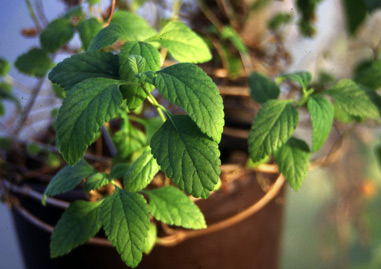Now anyone with a greenhouse really must have a pot or two of Lippia species. The nomenclatural botanists have fiddled with this genus, so some are also known as Aloysia, and others as Phyla, the names keep changing.
However they are all closely related, mostly South American plants. Members of the verbena family they tend to have relatively small thus insignificant blooms (though still pretty) but more interesting foliage. The first you may well know already as it’s quite common, confusingly named, and re-named, this is Lippia or Aloysia citriodora or triphylla. The common name is Lemon Verbena, which may be even more confusing as many imagine this name refers to that mint like (somewhat invasive) garden plant Lemon Balm (Melissa).

But the first time you smell the true Lemon Verbena you will understand- this is just so much sweeter, more lemony, almost lemon sherbet, and much more nicely perfumed than the balm. And this perfume endures, the long pointed leaves dry easily without losing their scent. This really persists quite amazingly. Some leaves folded into the pages of a book still remain strongly scented from the day I picked them decades before. And it is such an addictive scent, you just can’t stop sniffing at a leaf you pocket.
Almost hardy this may sometimes be got through a winter outdoors- dying on top but re-growing from the root system after the manner of a hardier fuchsia. Happiest with conditions similar to and between those for a tender fuchsia and a zonal pelargonium this is safer under cover in a greenhouse or conservatory- and here it can be enjoyed year round. Lemon Verbena is also much like a fuchsia as being effectively a small shrub, and very obliging as to soil and watering regimes. It remains relatively compact in a large pot or small tub and can be pruned if necessary, but may reach head height planted in a border. However as leaves are continually taken for posies and for flavouring teas and sweet desserts the plants seldom get very big. The other species you must have is Lippia dulcis, or the Aztec Sweet Herb, available from a few suppliers this is smaller, softer, more tender, a lax almost trailing plant well suited for growing in a greenhouse hanging basket. The mint like foliage has a curious perfume, not that appealing, but the taste is truly astounding. This is one of those peculiar super-sweets, a pleasant chew the leaf becomes sweeter, and sweeter still, as you continue.
This leaf can be used in teas, salads, desserts and so on though more as a curiosity than a substantial substitute for sugar. Plus the roots can be chewed like (a poor) liquorice. Finally though a word of caution, both these are pest magnets- if you have any background aphids, white fly, red spider mite and so on then these plants will soon reveal them. This can be useful as an indicator but does mean they need regular inspection and possibly treatment.


